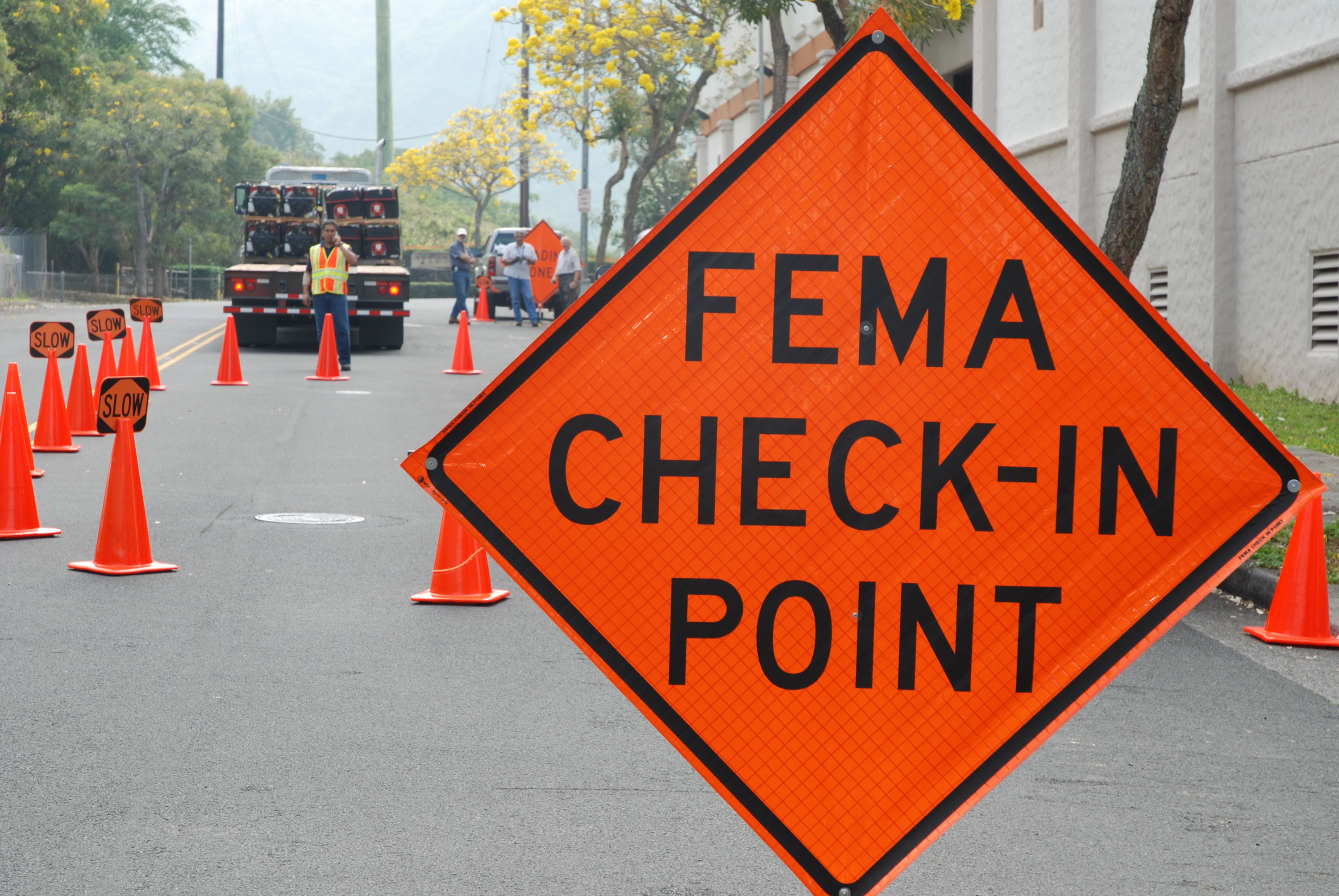Receiving a FEMA check envelope can be both a relief and a source of confusion for many individuals recovering from disasters. Whether you're dealing with the aftermath of a hurricane, flood, or wildfire, understanding what the envelope contains and how to use it is crucial. FEMA (Federal Emergency Management Agency) provides financial assistance to help survivors get back on their feet, but navigating the process can feel overwhelming. The envelope typically includes a check or direct deposit information, along with instructions on how to allocate the funds for recovery-related expenses. Knowing what to expect and how to utilize these resources effectively can make all the difference during challenging times.
FEMA check envelopes are distributed as part of the agency's Individual Assistance Program, designed to support households impacted by federally declared disasters. These funds are not loans and do not need to be repaid, making them a lifeline for families facing unexpected costs. However, the envelope also comes with guidelines that must be followed to ensure compliance with FEMA's rules. Failure to adhere to these guidelines can result in complications, such as repayment demands or penalties. This article will guide you through every aspect of the FEMA check envelope process, from what it includes to how you can use it wisely, ensuring you maximize the benefits while staying within FEMA's regulations.
For many disaster survivors, the FEMA check envelope is more than just financial aid—it's a step toward rebuilding their lives. While the envelope itself may seem simple, the implications of its contents are profound. This article aims to demystify the process, answer common questions, and provide actionable tips to help you navigate the complexities of FEMA assistance. From understanding eligibility criteria to avoiding common mistakes, we’ll cover everything you need to know to make the most of your FEMA check envelope.
Read also:Exploring The Wonders Of Kaiju Paradise R63 A Comprehensive Guide
Table of Contents
- What Is a FEMA Check Envelope?
- How to Apply for FEMA Assistance
- Is My FEMA Check Envelope Eligible for All Expenses?
- How to Use Your FEMA Check Envelope Effectively
- What Happens If I Misuse My FEMA Check Envelope?
- How to Appeal a FEMA Decision
- Common Mistakes to Avoid with Your FEMA Check Envelope
- Frequently Asked Questions
What Is a FEMA Check Envelope?
A FEMA check envelope is a package sent to eligible disaster survivors containing financial assistance from the Federal Emergency Management Agency. This envelope typically includes a physical check or information about a direct deposit, along with a letter outlining the purpose of the funds. The assistance is intended to help cover disaster-related expenses such as temporary housing, home repairs, personal property replacement, and other essential needs. FEMA's primary goal is to provide immediate relief to individuals and families affected by federally declared disasters, ensuring they have the resources to recover and rebuild.
It's important to note that the funds in the FEMA check envelope are not loans. Unlike loans from other agencies or financial institutions, FEMA assistance does not need to be repaid. This makes it a valuable resource for disaster survivors who may be struggling to cover unexpected costs. The envelope also includes instructions on how the funds should be used, as FEMA monitors the allocation of these resources to ensure they are applied appropriately. Understanding the contents and purpose of the envelope is the first step in utilizing the assistance effectively.
How to Apply for FEMA Assistance
Applying for FEMA assistance is a straightforward process, but it requires attention to detail to ensure your application is complete and accurate. The first step is to register with FEMA, which can be done online, via phone, or through a mobile app. You will need to provide personal information, such as your Social Security number, address, and details about the damage or losses you've incurred. FEMA also requires documentation, such as proof of identity, proof of ownership or occupancy of your home, and insurance information.
Once your application is submitted, FEMA will review it and may conduct an inspection of your property to assess the damage. This inspection is crucial, as it helps determine the amount of assistance you are eligible to receive. After the review process is complete, FEMA will notify you of their decision. If approved, you will receive your FEMA check envelope, which contains the funds and instructions for their use. It's essential to follow up with FEMA if you have any questions or concerns about your application status.
Is My FEMA Check Envelope Eligible for All Expenses?
One common question disaster survivors ask is whether their FEMA check envelope can be used for any expense. The short answer is no. FEMA funds are designated for specific disaster-related needs and cannot be used for unrelated costs. For example, the assistance may cover temporary housing, home repairs, medical expenses, or replacing essential personal property. However, it cannot be used for non-essential purchases, such as vacations or luxury items.
To ensure compliance with FEMA's guidelines, it's crucial to carefully review the letter included in your envelope. This letter will specify the purpose of the funds and provide examples of eligible expenses. Additionally, FEMA may require documentation to verify how the funds were used. Keeping detailed records of your expenses, such as receipts and invoices, can help you demonstrate compliance and avoid potential issues down the line.
Read also:Exploring The Surround Sound Trend A Comprehensive Guide To Immersive Audio Experiences
How to Use Your FEMA Check Envelope Effectively
Step 1: Understand the Purpose of the Funds
The first step in using your FEMA check envelope effectively is to understand the purpose of the funds. As mentioned earlier, FEMA assistance is intended for specific disaster-related expenses. Take the time to read the letter included in your envelope carefully, as it will outline the eligible uses for the funds. For example, if the funds are designated for home repairs, you should prioritize addressing structural damage or safety hazards before considering other expenses.
Step 2: Document Your Expenses
Once you've identified the eligible expenses, it's essential to document how you use the funds. FEMA may request proof of how the assistance was allocated, so keeping detailed records is critical. This includes saving receipts, invoices, and any other relevant documentation. Organizing these records in a folder or digital file can make it easier to provide them if FEMA requests verification. By documenting your expenses, you can ensure compliance with FEMA's guidelines and avoid potential complications.
What Happens If I Misuse My FEMA Check Envelope?
Misusing your FEMA check envelope can have serious consequences, including repayment demands and potential penalties. If FEMA determines that the funds were used for ineligible expenses, they may require you to return the money. In some cases, misuse of funds can also result in legal action or disqualification from future assistance. To avoid these outcomes, it's crucial to adhere to FEMA's guidelines and use the funds only for their intended purpose.
If you're unsure about whether an expense is eligible, don't hesitate to contact FEMA for clarification. They can provide guidance and help you understand the rules. Additionally, if you've already used the funds for an ineligible expense, it's important to address the issue promptly. Contacting FEMA and explaining the situation may help you resolve the matter without further complications.
How to Appeal a FEMA Decision
If you disagree with FEMA's decision regarding your application or the use of your FEMA check envelope, you have the right to appeal. The appeals process allows you to present additional information or documentation to support your case. To initiate an appeal, you must submit a written request within 60 days of receiving FEMA's decision. Your appeal should include a clear explanation of why you believe the decision is incorrect, along with any supporting evidence.
It's important to note that the appeals process can take time, so patience is essential. During this period, FEMA will review your appeal and may request additional information. If your appeal is successful, you may receive additional assistance or have the original decision reversed. However, if the appeal is denied, you may explore other options, such as seeking legal advice or contacting your local representatives for assistance.
Common Mistakes to Avoid with Your FEMA Check Envelope
While the FEMA check envelope is a valuable resource, there are several common mistakes that disaster survivors should avoid. One of the most frequent errors is failing to document expenses properly. Without adequate records, you may struggle to prove compliance with FEMA's guidelines, leading to potential issues. Another common mistake is misunderstanding the purpose of the funds and using them for ineligible expenses.
Other pitfalls include missing deadlines for appeals or failing to follow up with FEMA if you have questions or concerns. To avoid these mistakes, it's essential to stay organized, keep detailed records, and communicate openly with FEMA throughout the process. By taking these proactive steps, you can ensure a smoother experience and maximize the benefits of your FEMA assistance.
Frequently Asked Questions
Can I Use My FEMA Check Envelope for Rent Assistance?
Yes, FEMA funds can be used for temporary housing, including rent assistance, if you've been displaced due to a disaster. However, it's important to confirm that this is an eligible expense based on the letter included in your envelope.
How Long Does It Take to Receive a FEMA Check Envelope?
The timeline for receiving your FEMA check envelope can vary depending on the complexity of your application and the volume of requests FEMA is processing. Generally, survivors can expect to receive their envelope within a few weeks of approval.
What Should I Do If I Lose My FEMA Check Envelope?
If you lose your FEMA check envelope, contact FEMA immediately to report the issue. They can provide guidance on how to proceed and may issue a replacement if necessary.
In conclusion, the FEMA check envelope is a vital resource for disaster survivors, offering financial assistance to help them recover and rebuild. By understanding the process, avoiding common mistakes, and adhering to FEMA's guidelines, you can make the most of this aid. Whether you're navigating the application process, appealing a decision, or documenting your expenses, this guide provides the tools you need to succeed. Remember, FEMA is there to support you, and their resources can make a significant difference during challenging times.
For more information about FEMA assistance, visit their official website: FEMA.gov.


